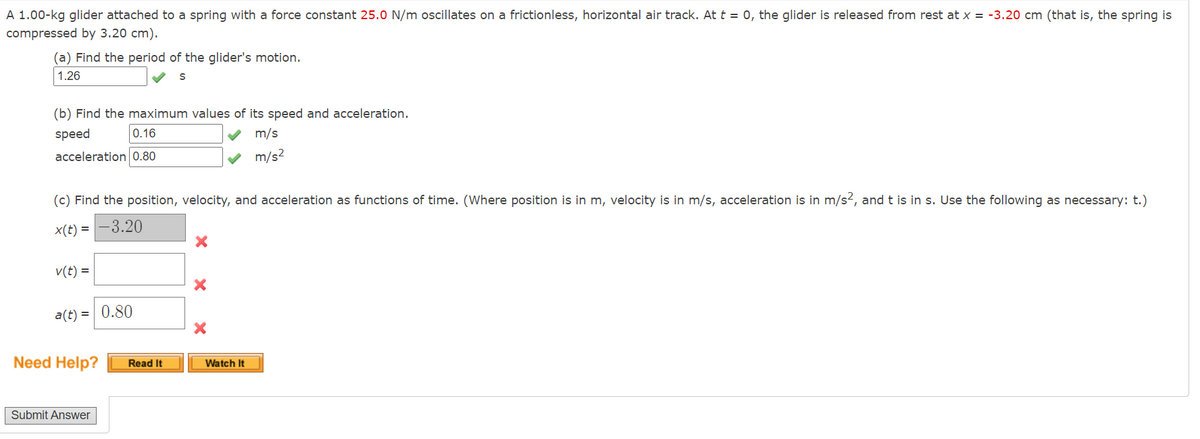A 1.00-kg glider attached to a spring with a force constant 25.0 N/m oscillates on a frictionless, horizontal air track. At t= 0, the glider is released from rest at x = -3.20 cm (that is, the spring compressed by 3.20 cm). (a) Find the period of the glider's motion. 1.26 S (b) Find the maximum values of its speed and acceleration. speed 0.16 ✔ m/s acceleration 0.80 ✓ m/s² (c) Find the position, velocity, and acceleration as functions of time. (Where position is in m, velocity is in m/s, acceleration is in m/s², and t is in s. Use the following as necessary: t.) x(t) = -3.20 v(t) = a(t)= 0.80 Need Help? Submit Answer Read It X X X Watch It
Simple harmonic motion
Simple harmonic motion is a type of periodic motion in which an object undergoes oscillatory motion. The restoring force exerted by the object exhibiting SHM is proportional to the displacement from the equilibrium position. The force is directed towards the mean position. We see many examples of SHM around us, common ones are the motion of a pendulum, spring and vibration of strings in musical instruments, and so on.
Simple Pendulum
A simple pendulum comprises a heavy mass (called bob) attached to one end of the weightless and flexible string.
Oscillation
In Physics, oscillation means a repetitive motion that happens in a variation with respect to time. There is usually a central value, where the object would be at rest. Additionally, there are two or more positions between which the repetitive motion takes place. In mathematics, oscillations can also be described as vibrations. The most common examples of oscillation that is seen in daily lives include the alternating current (AC) or the motion of a moving pendulum.
Please help me solve ALL of part C. I am confused how to solve for it.

Step by step
Solved in 3 steps with 3 images









